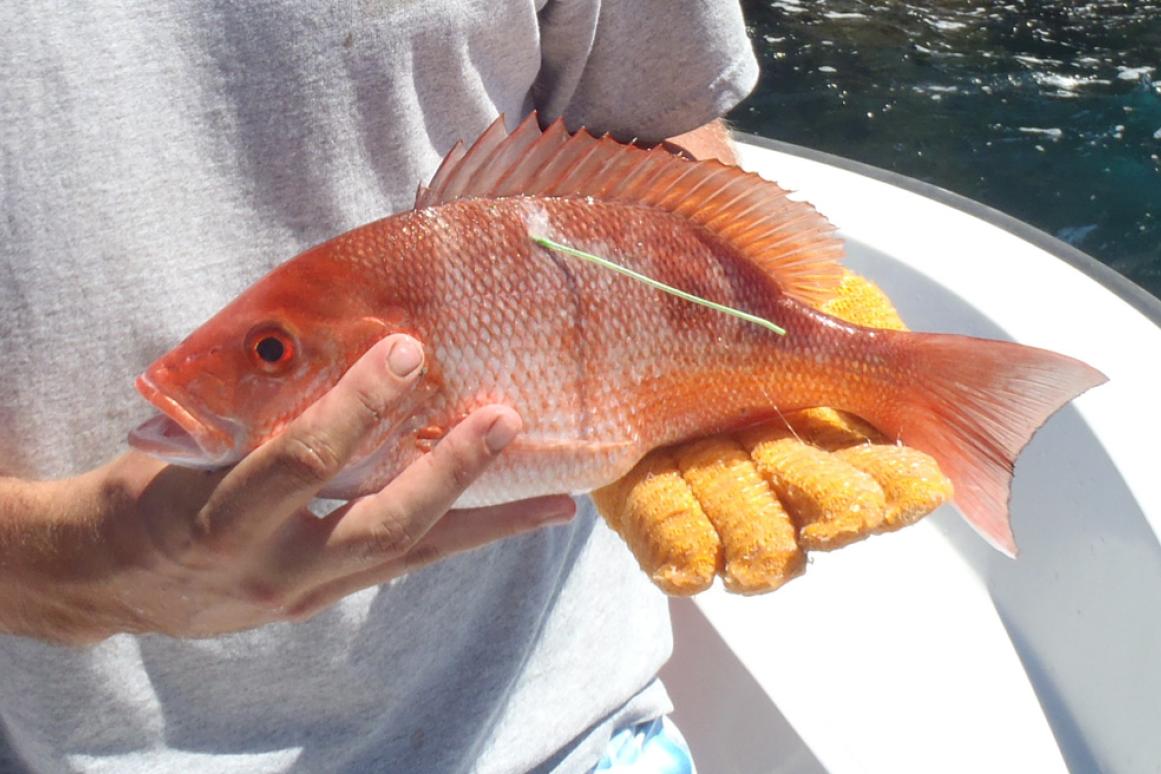Red Snapper Count Discovers ‘Great’ Gulf Snapper Population

CORPUS CHRISTI, Texas — The U.S. waters of the Gulf of Mexico are home to 110 million red snapper, about three times more than previously estimated, according to an unprecedented new population assessment led by the Harte Research Institute for Gulf of Mexico Studies (HRI) at Texas A&M University-Corpus Christi. Previous estimates put the population at about 36 million red snapper — having an absolute abundance estimate may potentially change the way the Gulf of Mexico fishery is assessed by federal and state officials.
The findings are contained in a more than 300-page report issued today by researchers leading the Great Red Snapper Count, a three-year independent red snapper population assessment that brought together more than 80 scientists from 12 institutions of higher learning, with participation from state and federal agencies. A video highlighting the results is available here.
The study was led by Dr. Greg Stunz, HRI’s Chair for Fisheries and Ocean Health and director of the institute’s Center for Sportfish Science and Conservation. Through a competitive grant process, Mississippi-Alabama Sea Grant Consortium, which administered the project, awarded $9.5 million in federal funds to the research team. With matching institutional funds, the project totaled $12 million.
“We are thrilled to report on the results of the Great Red Snapper Count. A team led by the top fishery scientists from around the Gulf and beyond have been tirelessly working and have successfully determined the total number of red snapper in the region,” Stunz said. “The project is unprecedented in terms of scope, coverage, and methodologies, and could not have been accomplished without the generous support of the U.S. Congress and leadership from NOAA Sea Grant including valuable insights from an engaged steering committee. We are honored that this information will greatly expand our knowledge base of red snapper and are looking forward to rapid integration into management.”
Red snapper is one of the most popular fish species in the U.S. Because the stock was once considered overfished, anglers saw dramatic reductions in both the fishing seasons and bag limits for decades. Challenges in obtaining abundance data on the number of red snapper in the Gulf of Mexico were considered part of the issue, which prompted Congress to commission this independent study.
While scientists found large numbers of snapper on previously well-known snapper habitats such as artificial reefs and natural banks, the Great Red Snapper Count made a major new discovery: what scientists called a “cryptic biomass” of red snapper in the Gulf.
Red snapper are reef fish, and while they occur Gulf-wide, previous population counts had focused mostly on fishery data collected from known, popular reef and bank locations. The Great Red Snapper Count sought to better understand snapper population on the previously uncharacterized and unmapped bottom habitat that makes up the vast majority of the Gulf, where scientists have suspected there might be more fish going uncounted. What they found was that this previously unassessed habitat harbors extraordinarily high number of red snapper, far more than anticipated.
How did they count a popular fish species spread out over thousands of square miles of open ocean? Well, it wasn’t quick or easy. Researchers across the Gulf recorded thousands of hours of video captured through state-of-the-art ROV camera-based surveys, conducted hydroacoustic surveys, and logged hundreds of boat hours on traditional sampling, tagging, and other fieldwork. They also engaged anglers in a tremendously popular high-reward tagging program, where tagged snapper were reported for a cash prize. Astonishingly, 30 percent of the tagged fish were ultimately returned, demonstrating a high degree of stakeholder involvement in the project. It also showed catch-and-release can be a viable management tool in the industry.
“This work exemplifies what HRI is all about,” said HRI Senior Executive Director Dr. David Yoskowitz. “Bringing the science forward to directly inform management decisions of our natural resources is critical, and this is one of the most important fisheries management issues in the region right now.”
Stunz said both the work and the results have already inspired similar studies for greater amberjack and red snapper along the southeastern United States.
Federal fisheries officials must now study the data to decide how to integrate it into future management decisions.
“This is just the beginning of future assessment meetings and activities with managing agencies, Scientific and Statistical Committees, the NOAA Southeast Fisheries Science Center, and the Gulf of Mexico Fishery Management Council,” Stunz said. “These activities will facilitate direct incorporation of these data into the management process.”
For more about the Great Red Snapper Count including project and partner information, fact sheets, videos, and to download a copy of the report, visit SnapperCount.org.
